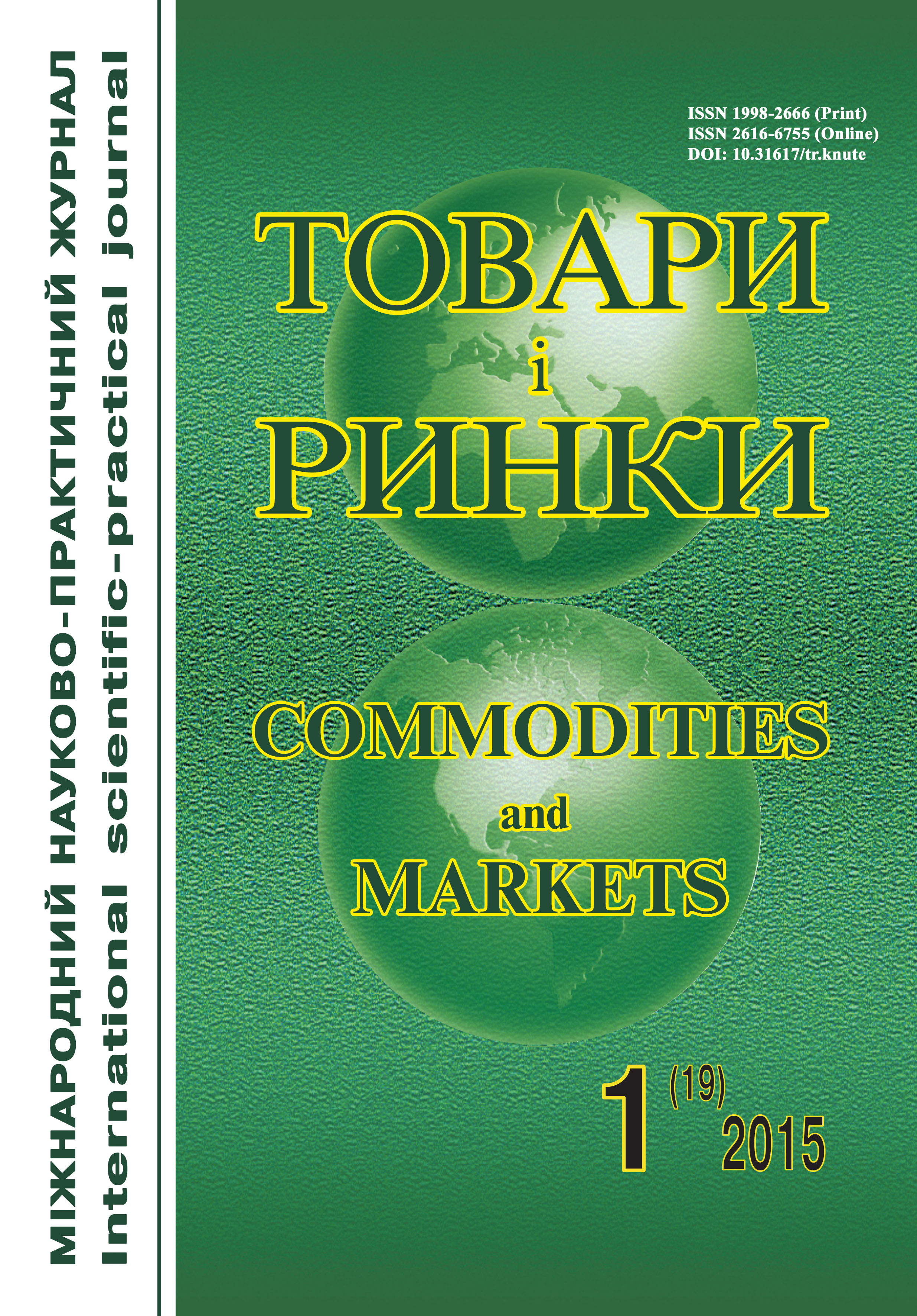Mathematical modeling of the control system of food production technological facility
Keywords:
technological complex, object, mathematical model, optimal control, optimal planning, criteriaAbstract
Background. Modern food industry demands high management system levels that implement the functions of planning, organization and management at all stages. Management should be done not of individual processes, units and stations, but of technological systems as a whole, that is, using the principles of integration and distributed control, which is the basis of computer-integrated manufacturing as a single system.
Technological complexes (TC) of food production in terms of management tasks are multidimensional.
After optimal planning one should move to optimization of each technological component of TC. Unlike the planning tasks, optimal control of technological units is performed in current time and takes into account the continuity of the process.
The aim of the study is creating conditions for increasing product quality and reducing energy by developing optimal control system of technology unit as part of TC, and the expected object adaptation to changing conditions.
Material and methods. Mathematical models of primary production planning have been analyzed. To solve the problem of optimal control of technological units variation method was used, which relies on the use of modern computer technology, and the theoretical basis was optimal systems control with concentrated and distributed parameters, identification and assessment of the state, sensitivity and manageability. The results are applicable to a wide class of real objects, which are described by differential, integral and other equations.
Results. The task of optimal management of technological object is reduced to the solution of two-point boundary problem, which results in optimum trajectory and program management. The inaccuracy in the construction of mathematical models and change in model parameters lead to a shift in actual trajectory of optimal systems. It is proposed to use the feedback to adjust actual trajectory parameters and mathematical model of the object. As a result adaptive automated system of optimal control of technology unit was obtained.
Conclusion. An optimal solution to the problem of controlling the technological unit has been obtained. Based on the mathematical model of the object by variation method optimization is reduced to the solution of the boundary problem, which are optimal trajectory and facility control (9; 11).
It has been established according to the simulation results that the optimal control test system decreases almost three times (10), thus consumption of heat-releasing fluids is reduced, and the optimal trajectory accurately reaches the set value compared to the local system. The structure of adaptive system of optimal control has been developed by means of which optimal trajectory in actual operation of the facility is adjusted.
In the application of the results there is possibility to effectively use inputs and create conditions to improve food quality.
References
Markin Ju. P. Matemeticheskie metody i modeli v jekonomike / Ju. P. Markin. — M. : Vyssh. shk., 2007. — 424 s.
Akulich I. L. Matematicheskoe programmirovanie v primerah i zadachah / I. L. Akulich. — M. : Vyssh. shk., 1986. — 319 s.
Aliev R. A. Metody i algoritmy koordinacii v promyshlennyh sistemah upravlenija / R. A. Aliev, M. I. Liberzon. — M. : Radio i svjaz', 1987. — 208 s.
Aliev R. A. Metody integracii v sistemah upravlenija proizvodstvom / R. A. Aliev. — M. : Jenergoatomizdat, 1989. — 271 s.
Voloshyn O. F. Modeli ta metody pryjnjattja rishen' : navch. posib. / O. F. Voloshyn, S. O. Mashhenko. — K. : Vyd.-poligr. centr "Kyi'vs'kyj universytet", 2010. — 336 s.
Zgurovs'kyj M. Z. Osnovy systemnogo analizu / M. Z. Zgurovs'kyj, N. D. Pankratova. — K. : Vyd. grupa BHV, 2007. — 546 s.
Fedorchuk Je. N. Programuvannja system shtuchnogo intelektu. Ekspertni systemy : navch. posib. / Je. N. Fedorchuk. — L. : Vyd-vo L'viv. politehniky, 2012. — 168 s.
Matematychne programuvannja : navch. posib. / [M. M. Glushyk, I. M. Kopych, O. S. Pencak, V. M. Sorokivs'kyj]. — L. : Vyd-vo LKA, 2004. — 240 s.
Muromcev D. Ju. Sistemy jenergosberegajushhego upravlenija : ucheb. posob. / D. Ju. Muromcev, V. A. Pogonin. — Tambov : Izd-vo Tambovskogo gos. tehnicheskogo un-ta, 2006. — 92 s.
Denisenko V. V. Komp'juternoe upravlenie tehnologicheskim processom, jeksperimentom, oborudovaniem / V. V. Denisenko. — M. : Gorjachaja linija — Telekom, 2009. — 608 s.
Sejdzh Je. P. Optimal'noe upravlenie sistemami / Je. P. Sejdzh, Ch. S. Uajt ; per. s angl. ; pod. red. B. R. Levina. — M. : Radio i svjaz', 1982. — 392 s.
Petrov Ju. P. Ocherki istorii teorii upravlenija / Ju. P. Petrov. — SPb. : BHVPeterburg, 2012. — 272 s.
Metody klassicheskoj i sovremennoj teorii avtomaticheskogo upravlenija : ucheb. : v 5 t. — [2-e izd., pererab. i dop.]. — T. 4 : Teorija optimizacii sistem avtomaticheskogo upravlenija ; pod red. K. A. Pupkova i N. D. Egupova. — M. : Izd-vo MGTU im. N. Je. Baumana, 2004. — 744 s.
Hull D. G. Optimal Control Theory for Applications / D. G. Hull. — New York : Springer-Verlag, Inc., 2003. — 374 p.
Tregub V. G. Osnovy komp’juterno-integrovanogo keruvannja (Integrovani avtomatyzovani systemy keruvannja) : navch. posib. / V. G. Tregub. — K. : NUHT, 2005. — 191 s.



